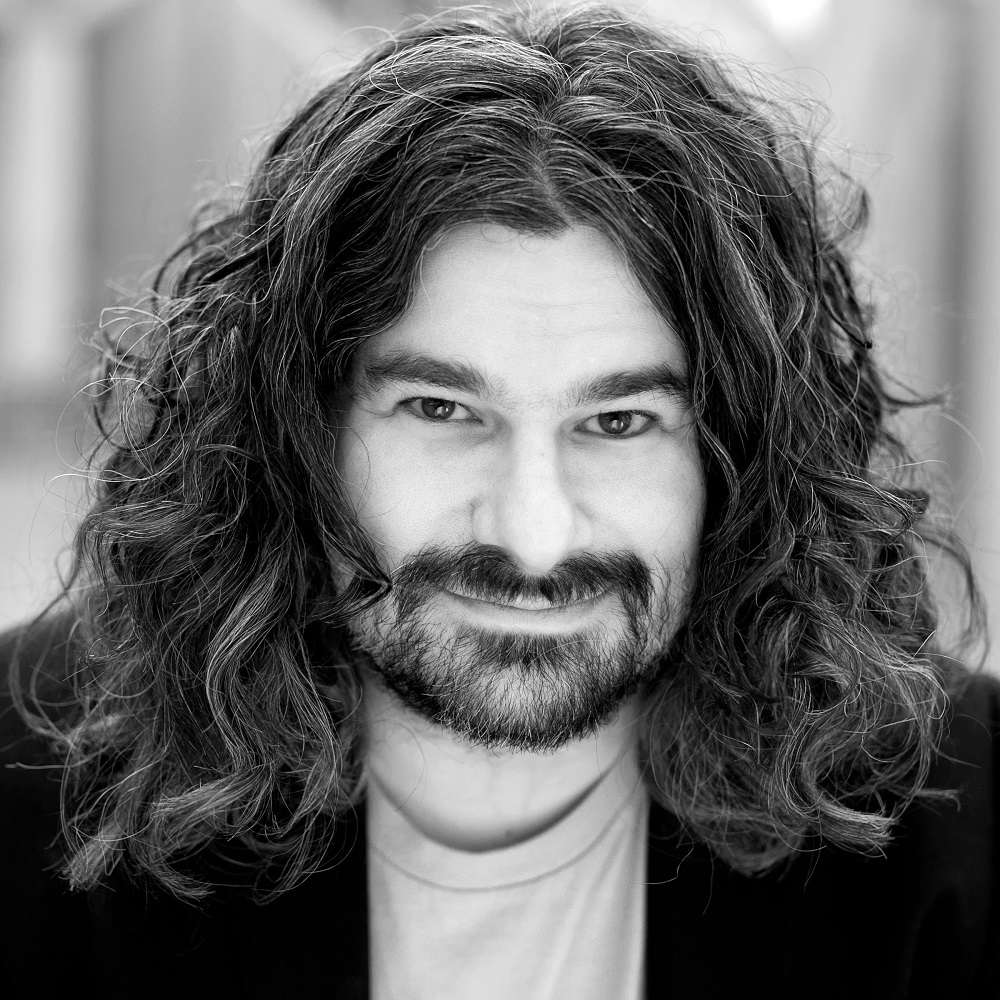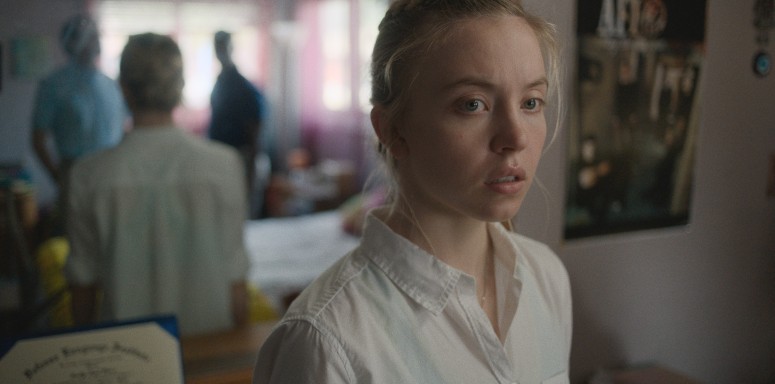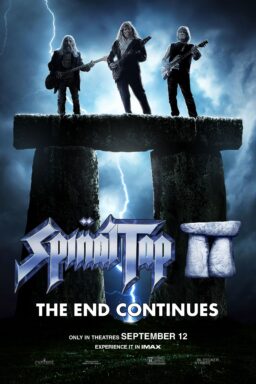When leaving the central core of the Berlinale press and industry section of the festival that’s primarily situated around Potsdamer Platz, you encounter the various neighborhoods that comprise this storied city. The East/West divide that characterized Berlin for decades manifests itself in more obvious ways when you know what to look for. The older, hundred-plus-year-old buildings dominate what was once under Russian control. These are newly renovated places after the wall came down, snatched up after the collapse of the GDR, and now comprise some of the most beautiful, and thus the most pricey, areas of the city.
The area of West Berlin, where several of the main public venues are located in and around the Zoo, sees much more of a post-War, generic aesthetic, a bunch of lumpy buildings free from ornamentation. This area was bombed considerably, and the end result is, ironically, that what was once West Berlin has an austere, almost Soviet style of blocky places, while what once were essentially ghettoized tenements have been transformed on the other side into beautiful places to live.
It’s all too easy during these festivals to be so focused on watching film after film that one forgets to take in some local sites and make time for meals with friends. If the virtual screenings over the last several years have proven anything, it’s that these human connections and culinary adventures are what truly elevates heading to the other side of the world to find new films to fall in love with.
Berlin has always been an international city, and its character is very much informed by its large population, especially those from around Turkey and the Levant. If currywurst, the sausage slathered in spicy ketchup that originated in the Charlottenburg district, is one definitively local nibble after a night out drinking, it’s the ubiquitous döner kebab that truly defines this multicultural reality. Just as tacos al pastor is the result of Lebanese bringing shawarma to Mexico and transforming the use of the rotisserie spit to fit the local culture, the Berlin döner, served on triangular bread or in a wrap and stuffed with veggies and sliced meet, was a unique contribution to local Berlin cuisine from Turkish migrants in the early 1970s. I had a taste at Imren Grill before a screening and was super pleased with the results.
A few days later, I had a chance to join a friend for a “Sultans feast” at the Turkish restaurant Hasir Ocakbaşı and reveled in gorging on warm bread, a mix of small plate appetizers and a giant platter of chunks of lamb, chicken and the delicious kaşarlı köfte ground meat skewers. We then wandered the Kreuzberg district, the former home to punk rockers and new immigrants that still has a bit of the gritty soul of the city intact. I crossed the famed Oberbaumbrücke, the bridge that served as one of the border crossings between West and East and is flanked by two large, beautiful brick towers. On the other bank is the East Side Gallery, transforming large chunks of the wall into a miles-long art mural. Along the way are photos showing how it looked as late as 1991, making the massive demographic and architectural changes over the last decades all the more palpable.
The next day I was taken to Borchardt, the storied restaurant in the Gendarmenmarkt that’s regularly home to stars and politicians alike. Essentially a French bistro serving pan-European cuisine, it’s a place to spot many celebrities that come to the fest sitting in the inner section and is open well into the early morning hours during Berlinale in case you wish to escape for a magical meal. I found time during lunch to munch down their famous schnitzel, and frankly, it was the best I’ve ever had, supplanting even the several I ate during days in Vienna. It’s a pricey indulgence for some fried-up meat, to be sure, but the experience was entirely worthwhile.
Beyond the meals, there was, of course, the nourishment of going to the cinema, and getting used to a new place is sometimes a challenge. I missed the press screening for a film in order to attend a gathering at the Canadian embassy, where in an absolutely packed environment, seemingly half the festival was there to celebrate the films from my country that were playing. I saw Matt Johnson, Jay Baruchel, Glenn Howerton, and the rest of the “Blackberry” team still buzzing from their public premiere the year before, but there were also dozens of producers in town for the European Film Market, the massive event that takes place simultaneous to the public festival and absolutely critical to birthing future films and co-productions. Cameron Bailey and a slew of team members from TIFF were on hand as well, further illustrating the interconnected nature of these stops on the festival circuit.
The next day I waited at my venue for a ticket to a public screening of a film I was desperate to see, calling in a favor to grab one from the sold-out show. I arrived 90 minutes early and waited … and waited. Ten minutes before it started, I got a call from the rep that they were in the lobby with my ticket. I was in the lobby waiting, waving my arms, not able to spot them. They said they were by the Minions poster, and my heart sank. I was at the Cinemaxx, the main location for all the press screenings I’d been attending. They were, correctly, at Cubix, another location entirely with a “C” and an “X” that, at that very moment, I learned existed. The film in question was “Reality,” and there’s seemingly no better metaphor for losing one’s sense of perspective at a new fest than to literally lose a chance at experiencing reality.
Luckily, another screening was added the next day, and I got a chance to experience Tina Satter’s extraordinary work. Derived from Satter’s play Is This A Room, the film stars Sydney Sweeney as Reality Winner, the NSA and Air Force translator who leaked an intelligence report to The Intercept website detailing Russian interference in the election. Along with Marchánt Davis, Josh Hamilton, and an exquisite Benny Elledge, “Reality” is a tense, surreal, and at times bleakly funny look at the actual interrogation of Winner, the lines of dialogue derived entirely from the court transcripts and digital recordings.
The film easily could be stilted, but thanks to Satter’s cinematic sense and the circumstance’s claustrophobic nature, it never succumbs to the forced limitations of the stage. There are crosscuts to the actual transcriptions to remind us that even the banalest, awkward, or inadvertently funny moments are all part of the record, making for a dizzying mix of a dramatic recreation with a documentary-like precision.
The actors bring the experience alive in ways that are sometimes quite astonishing, and Satter is playful with how she deals with redacted elements, dancing around the truths we know years after the fact, and filling in gaps when it makes sense to do so. I was reminded of the best of “Homicide: Life On the Streets,” where entire episodes would take place in “the box” and distill the power of a procedural drama down to its very core. With “Reality,” Satter grants us an equally effective moment of human interaction, detailing this unique historical moment that raises questions to this day about how the entire case was handled, how the publication protected its sources, and how one woman decided that the truth was more important than the lies. To see the film the very week that the Dominion Voting systems court records dump exposes the internal communications of those at Fox News makes the events of the film even more salient, and the fictionalized version may, in fact, prompt more discussion than the original leak ever did.

John Trengrove’s “Manodrome” takes the “Taxi Driver” motif and recontextualizes it for the rideshare generation. Jesse Eisenberg plays Ralphie, a young father-to-be who exudes quiet rage and inner conflict, and much of the film’s success relies entirely on his exceptional performance. He is physically transformed in this film, but it’s his ability to draw us into the complexity of his emotions that makes things work as well as they do.
The storyline of cult-like incel groups echoes the likes of “Fight Club,” and for many, this may be a societal aspect not worth shedding light upon. Those considerations aside, what’s more frustrating is how the film doesn’t go far enough; when things start going truly awry, it’s as if it’s been made more palpable to audiences than to truly dive into the heart of the darkness of these individuals. The film is quite good, to be sure, and worthy of seeing if only for the fine lead performance, and Adrien Brody makes the most out of his underwritten part. But in the end, the storyline doesn’t quite coalesce, doesn’t quite live up to its bleak premise, and doesn’t quite thread the needle by having an appalling anti-hero that one can still spot the humanity within. It echoes other, better movies that pulled off this magic trick, yet while it’s not entirely a success, it’s still a film worth considering.

For a look at another actor known for their lanky, awkward masculinity, there’s Michael Cera in Dustin Guy Defa’s “The Adults.” Cera plays Eric, who has come home to visit his sisters Rachel (Hannah Gross) and Maggie (Sophia Lillis) but is really itching to get a local poker game up and running again. The three siblings are all mourning in their own way the loss of their mother, and the awkward sibling relationships form much of the quiet dramatic tension of the film.
There are loads of inside jokes, weird voices, and musical skits that illustrate the closeness that the siblings once shared that feel all the more awkward when witnessed from the outside. It’s a quiet movie, very much of the American Indie idiom from a few years back, and certainly will not be to everyone’s taste. Still, given the committed performances and inherent believability of every geeky moment, there’s much to admire.

Berlinale often showcases international genre films that go on to play festivals like Montreal’s Fantasia or Austin’s Fantastic Fest. I wouldn’t be surprised to spot Byun Sung-hyun’s “Kill Boksoon” there if it hasn’t already bowed on Netflix by the summer, as this wild assassination tale would be wondrous with those boisterous crowds. With echoes of “John Wick” or even “The Professional,” the stylish thriller details the story of Gil (Jeon Do-yeon), a mother raising a teenage daughter and killing people in her spare time. She is inexorably tied to Cha Mik-Kyu (Sol Kyung-gu), CEO of MK, who has professionalized the local murder industry, along with his conniving sister Min-hee (Esom).
The action is stylish and colorful, and the dramatic tension is appropriately overwrought, as is in keeping with most Korean genre dramas. The running time is a good half hour too long (as is also often the case), but along the way, there’s more than enough to keep attention, especially if there’s a chance to see with a welcome community of fellow filmgoers.

The same could be said for “#Manhole,” a high brisk, concept thriller from Kazuyoshi Kumakiri. Yuto Nakajima plays Shunsuke, a salaryman who’s set the next day to marry the CEO’s daughter. When drunkenly walking home, he finds himself at the bottom of the titular orifice, his leg cut open but the battery on his phone helpfully fully charged. Reticent to call the authorities, he tries all his contacts to no avail until an ex-girlfriend picks up.
The film takes a more interesting tack when as a last-ditch effort for recovery, Shunsuke creates a @manholegirl account on his phone on “Pecker,” a pseudo-Twitter. “Her” story soon gains traction, and an army of sleuths sets out to help the virtual damsel in distress. The hashtag of the film’s title takes the tale into many compelling twists and turns.
There may be too many different things crammed into the small space, and just too many broad responses (exploding foam, anyone?) to truly take it all seriously. Yet the ingredients are all there for this to be a solid experience, especially with a hollering crowd excited to see vengeance play out.

An even more effective film about claustrophobia and the human condition is Vasilis Katsoupis’ “Inside.” We meet Nemo, an art thief who dropped into the penthouse to break into the apartment of a famed collector. He is looking for the multi-million dollar paintings by the Austrian expressionist Egon Schiele. When the bypassed alarm reactivates, he is trapped inside, forced to fend in the austere environment for at first survival and then hopefully escape.
Three magical ingredients truly elevate this otherwise fairly straightforward tale. The first is the impeccable curation of the artwork we see, as well as the austere production design that truly makes the prison-like apartment have a chilling beauty (the best since audiences spent time in the bunker-like structure that Lydia Tár calls home). The third is the absolute heart of the entire piece, the inimitable Willem Dafoe. From his sinewy build to his world-weary voice, this is but one in a constellation of sublime performances over his remarkable career. So much of the thrill of watching “Inside” is to overdose on one of the great actors of his generation simply occupying our view for the whole of the running time.
Every moment, from the construction of methods of survival to the scratched-out markings on the wall, believably emerges from this most remarkable of performers. We wince with pain when he is cut, we smile with bemusement as one after another escape attempt fails. A film like this inevitably has better build-up than anything, and the final moments may feel a bit forced, but there’s more than enough to keep things engaging though out. The use of music is also quite well considered, with Radiohead’s “Pyramid Song” providing the exact level of unsteady beauty required.

Finally, yet another movie that’s primarily set in constrained environments is Guy Nattiv’s “Golda.” Helen Mirren astounds (yet again) with her remarkably nuanced take on the Israeli leader, focussing on the events of the 1973 war and the battles with health problems that coincided.
I heard chatter that the film didn’t do enough to show “the other side” (I don’t recall the same complaints made about “The Darkest Hour,” a film that “Golda” in many ways echoes). Rather than a sweeping film about Meir’s rise, this telling benefits by focusing so specifically on this moment of existential doubt both for her country and her leadership.
There’s a unique power portrayed here, with Mirren perfectly capturing her acerbic humor, quiet confidence, and remarkable ability in a country filled with ambitious men to wrangle them towards a common goal. There’s no doubt about the stamina of the woman, nor in her ability to be decisive when need to be, but the film illustrates Golda’s unique capacity to both be the toughest in the room and also the most empathetic. Especially pleasing is her kibitzing with Kissinger, perfectly performed by Liev Schreiber, speaking just enough to the complexity of her country’s relationship with the U.S. and how that would so dramatically shift during this particular event.
Yes, some of it is overly schmaltzy, and this is clearly a performance that radiates more than the film as a whole. But this tiny chapter in the life of Golda provides a welcome spotlight on one of the more remarkable leaders of the 20th century, one who has long been ignored outside of her country. Other films can (and should!) tackle the other, more nuanced aspects of her character, and dive into the complexities of that time period and how the events of that fall continue to resonate to this very day. But for a narrow glimpse into one woman’s battle to keep her nation from destruction, the film is decidedly effective, almost entirely thanks to an absolutely barnstorming take by a terrific performer.












